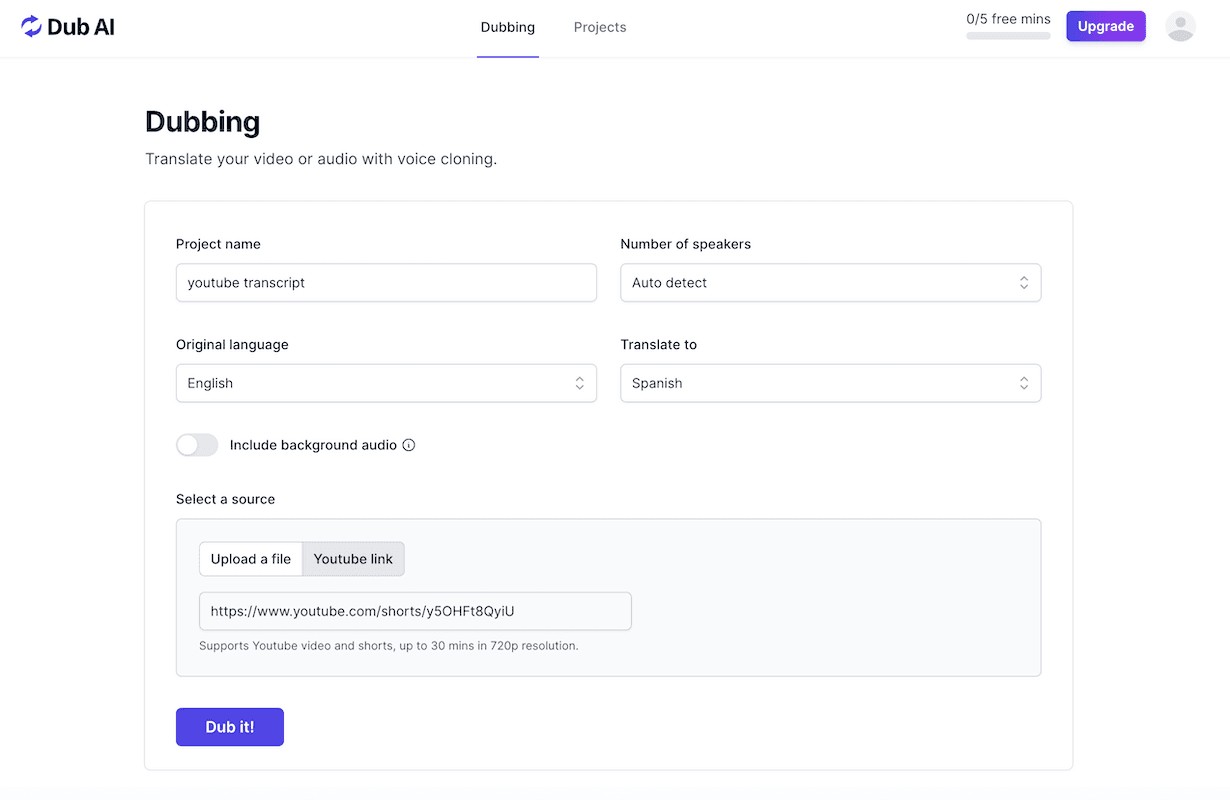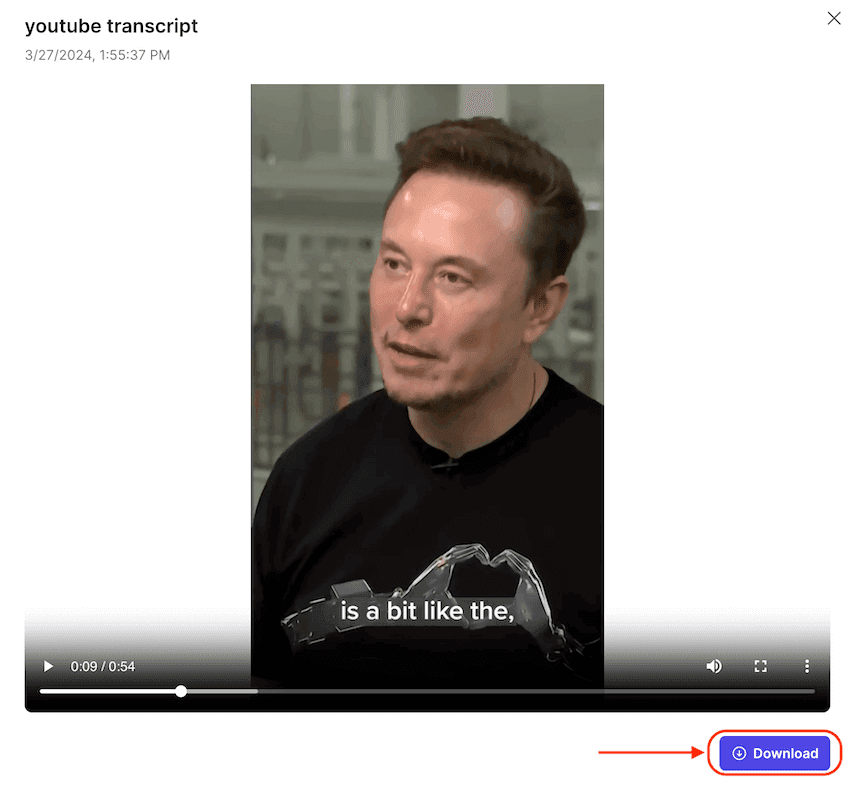How to Dub a Video
Dubbing is an art form that enhances videos. It requires translation, voice acting, synchronization, and technical expertise. Dubbing opens up possibilities for content creators to reach global audiences. Let's discuss its benefits, the process, and the software tools that make it easier.

Professional studios and advanced software tools help creators produce dubbed content that resonates across linguistic and cultural barriers. It is a transformative process in the world of media. The pioneers of media introduced dubbing as a necessity in the early days of radio and television to cater to diverse audiences. It has since evolved into a sophisticated craft. In this article, we'll explore the intricacies of dubbing.
What Is Dubbing?
Dubbing is the post-production process of replacing the original dialogue or sounds in a film or video project with new audio tracks. This technique is crucial for translating foreign films into the preferred language, covering both animated and live-action content.
Benefits of Dubbing
Global Reach
Dubbing enables content to reach a wider international audience. It breaks down linguistic obstacles and fosters global connections.Cultural Adaptation
Dubbing helps any content to be culturally adapted, ensuring it resonates with diverse audiences worldwide.Enhanced User Experience Dubbing enables creators to provide their content in the viewer's native language. It enhances the overall viewing experience, leading to increased engagement and satisfaction.
Improved Understanding It aids in conveying complex ideas and emotions more effectively, ensuring that the intended message is understandable to all viewers.
Preservation of Artistic Integrity Dubbing preserves the artistic integrity of the original content while making it accessible to a wider audience.
The Traditional Method Of Dubbing
The traditional process of dubbing a video involves several key steps:
Step 1: Script Translation
The first step in the dubbing process is to translate the original script into the target language. The process of dubbing involves not just the literal translation of the words but also an adaptation of cultural references and idioms.
Step 2: Casting Voice Actors
Once the script is ready, the next step is to cast voice actors who can deliver the dialogue in the target language. The casting process can vary depending on the project. For lead roles, the actors are often read to pictures to see if their voice matches the character's image. For minor roles, voice demos are reviewed and submitted.
Step 3: Recording the Dialogue
The voice actors then record the translated dialogue. In this critical step in the dubbing process, the actors need to match the pacing and tone of the original dialogues.
Step 4: Post-Production
After the dialogue has been recorded, it's time for post-production. This involves mixing the new audio track with the other elements of the video, such as the original sound effects and music, to create a seamless audio-visual Experience.
How AI Tools Can Help With Dubbing
The art of dubbing plays a crucial role in reaching global audiences by providing seamless language localization. With the rapid advancements in artificial intelligence(AI) technology, the landscape of dubbing is undergoing a transformative shift.
AI tools such as Dub AI are revolutionizing the dubbing process, offering unprecedented efficiency, accuracy, and flexibility. This section delves into the innovative ways AI tools could be used. Here's a short guide on how to create a dubbed version of a YouTube video using Dub AI.
Step 1: Sign up a free account on Dub AI
Visit the Dub AI website and register a new acccount.
Step 2: Create a new project for the YouTube video

Step 3: Wait for the project to finish

Step 4: View results and download the dubbed video

Software Tools Used for Dubbing
Digital Audio Workstations (DAWs)
Reaper Cockos
Reaper Cockos is a comprehensive DAW. It is known for its flexibility and stability, widely used in various audio-related fields. It's a go-to for professionals looking to create, mix, and modify sound effects with precision.
Adobe Audition
Adobe Audition is a professional audio workstation that offers powerful digital audio editing capabilities. It's used for sound design, podcast editing, music production, and post-production for film and television.
Audacity
Audacity is a free, open-source audio editing software that's user-friendly and supports multi-track audio editing. It's a popular choice for those looking for a cost-effective solution.
AI-Powered Dubbing Tools
Dub AI
Dub AI uses artificial intelligence to improve dubbing efficiency and enhance the quality of dubbed content.
ElevenLabs
ElevenLabs is an AI speech software that provides realistic voices for creators and publishers. It can produce high-quality spoken audio in various styles and voices.
Rask AI
Rask AI uses machine learning algorithms to deliver real-time dubbing in over 130 languages. This tool makes the localization process easier and more accessible.
Cloud-Based and Live Streaming Tools
Clevercast
Clevercast is a cloud-based platform that allows live streaming with multiple audio languages and AI-generated closed captions, enhancing the quality of multilingual live streaming.
Maestra
Maestra is a high-quality speech-to-text software that provides accurate translations in English and over 50 languages, facilitating the dubbing process.
FAQs
How does dubbing differ from voiceovers?
Both dubbing and voiceovers involve recording audio for use in video. But to understand the difference, we need to focus on the question: what is dubbing? Dubbing specifically refers to replacing the original dialogue with a new language. Voiceovers, on the other hand, can be added without necessarily matching the video's lip movements. They are often used in documentaries, commercials, and narrations.What are the key steps in the dubbing process?
The key steps in the dubbing process include script translation, voice actor selection, recording the voiceover or voice dubbing, and post-production editing.Why is audio quality important in dubbing?
High-quality audio ensures that the message is conveyed effectively and maintains viewer engagement. Poor audio quality can distract viewers and detract from the overall experience of the video.Is AI reliable for dubbing videos?
Yes, AI dubbing tools are available and can significantly reduce the time and effort required for the dubbing process. These tools offer features like a library of voices, multi-language support, and integration with video editing software.Do I need professional voice actors for dubbing?
While it is possible to record your voiceovers by yourself, using professional voice actors is recommended for dubbing. They can deliver the required rhythm, timing, and emotional tone. This ensures that the dubbed audio seamlessly syncs with the video footage.What should I consider when selecting a voice actor for dubbing?
When selecting a voice actor for dubbing, consider their ability to match the original character's personality, tone, and emotion. It's also important to ensure they can perform in the language and dialect required for the dub.How do I ensure the dubbed voice matches the original video?
To ensure the dubbed voice matches the original video, pay close attention to lip-sync, timing, and the emotional tone of the original content. The voice actor should adjust their pace and delivery to create a natural match with the on-screen characters.Is dubbing expensive?
Dubbing can be more costly and time-consuming than other forms of voiceover work. It needs precise synchronization and the potential involvement of multiple voice actors. But the cost can vary depending on the project's complexity and the tools used.How has dubbing evolved with international markets?
Dubbing has become increasingly popular as media is circulated globally. Content creators can now reach international audiences by providing dubbed versions of films, TV shows, and other media in multiple languages.
Closing Thoughts
Dubbing is a complex process that goes beyond mere translation. It requires technical skill, linguistic talent, and creative interpretation. It offers a bridge between languages and cultures. Dubbing is an art that requires precision, skill, and creativity. It promotes understanding and appreciation for diverse perspectives. As technology advances, dubbing tools evolve with it. Whether in documentaries or animated content, dubbing ensures the essence of the original is preserved.
- Authors

- Written by:
- Chao Wu
- Title
- Founder of Dub AI